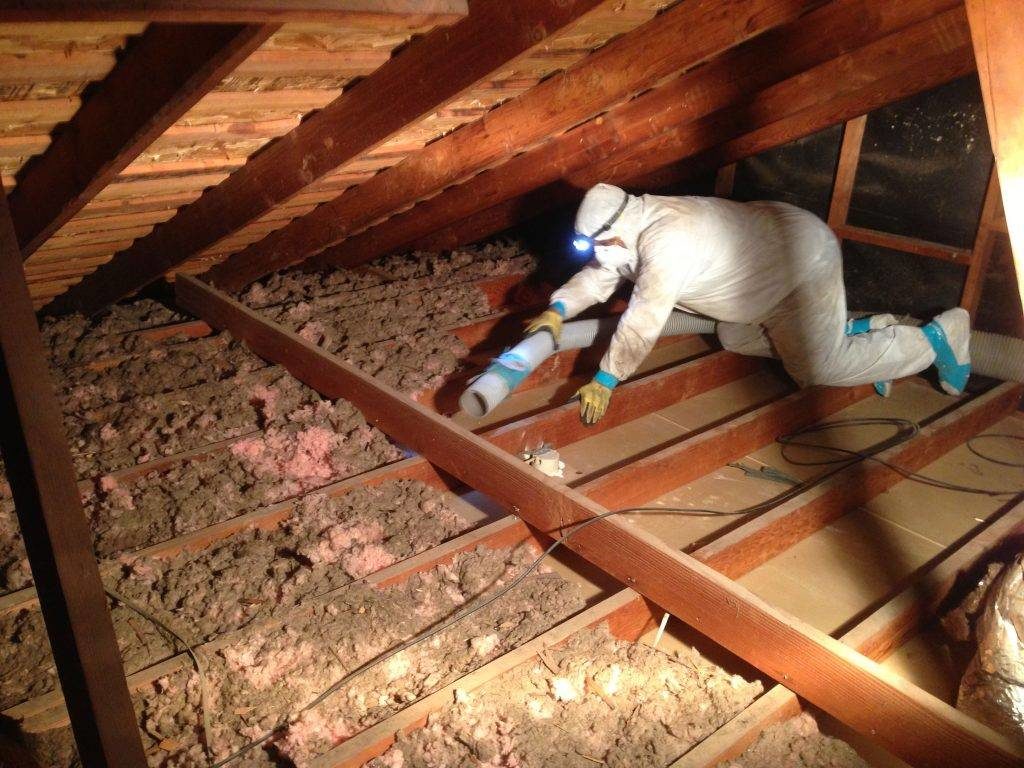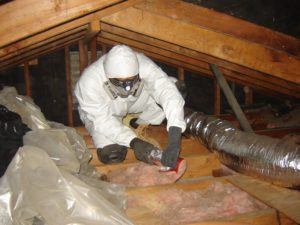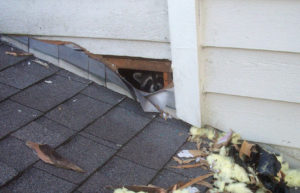
Few homeowners realize their high energy bills stem from deficient attic conditions. Photo: Atticare ©2019
It’s no surprise that the attic is one of the most neglected areas of the home. Being out of sight, it’s understandably out of most homeowners’ minds. What may come as a surprise, however, is the extent to which conditions in the attic can impact a home’s comfort, energy efficiency and air quality. To gain further insight, we’ve asked five Diamond Certified Expert Contributors to talk about three important aspects of the attic: insulation, cleaning and ventilation.
Attic Insulation
The function of insulation is to provide a thermal barrier around the living area of the home. Most homes have insulation in several places, including within exterior walls and beneath flooring, but perhaps the most crucial place to insulate is the attic. Sean Madar, co-owner of Atticare, explains why: “Attic insulation helps regulate a home’s indoor temperature by keeping conditioned air in the living space. Unfortunately, most homes in the United States have under-insulated attics, which allow conditioned air to easily escape from living areas. In this scenario, a home’s heater or air conditioner must work harder to maintain the desired temperature, which results in higher energy costs.”

Attic insulation has a significant impact on both indoor comfort and energy efficiency. Photo: Atticare ©2019
If you want to know whether your attic has adequate insulation, Mr. Madar suggests going up and taking a look. “If the insulation is level with or below the wood framing beams (roughly 3 to 3 1/2 inches high), you probably need to add some more,” he says. “However, if the insulation is higher than the beams, you’re probably all right.”
If you want to go beyond a mere visual assessment, Kevin Comerford, president of Service Champions, says you can gauge your attic insulation’s thickness with a tape measure. “The minimum recommended level of attic insulation is R38, which is between 13 and 14 inches thick,” he explains. “If you have less than that, you should consider adding some more to maximize your home’s energy efficiency.” Of course, the most accurate way to determine the adequacy of your attic’s insulation (and overall energy efficiency) is by having a professional contractor perform a complete assessment.
In addition to amending low attic insulation, Mr. Madar recommends air-sealing your attic, which involves sealing cracks and gaps around light fixtures, vents, pipes, and electrical wiring. “Prior to being sealed, the air transmission through the gaps in an attic can add up to the equivalent of an open 2’x 2’ window,” he says. “By performing air-sealing along with upgrading attic insulation, you’ll save money on your monthly energy bills.”
Attic Cleaning
Like any neglected space, attics tend to get dirty over time. However, while dust and cobwebs are to be expected, many homeowners are unaware of active sources of decay and contamination in their attics. “Rodent infestation is a common problem in attics,” clarifies Sean Koriat, owner of Attic Crew. “Most attics contain gaps, cracks and spaces that are big enough for rodents to pass through, and since attics are typically uninhabited, this makes them attractive to rodents looking for a quiet, dry place to nest.”

A professional attic cleaning can make your home healthier by eliminating problems like rodent infestation. Photo: Atticare ©2019
More than a mere nuisance, a rodent infestation in the attic can have a surprising impact on the rest of the home. “Rodents can chew through electrical wiring and damage attic insulation, which can cause power outages and reduce energy efficiency,” explains Mr. Koriat. “Additionally, they can create unhealthy conditions by defecating in the attic and carrying mites into the home.”
If you suspect a rodent infestation in your attic, Mr. Koriat recommends calling a professional attic cleaning company. “After cleaning and sanitizing your entire attic, a professional will locate all potential rodent entry points and seal them to ensure the infestation doesn’t reoccur.” He also recommends regularly inspecting your attic to verify that rodents haven’t found a way back in.
Attic Ventilation
As you now understand, deficiencies in an attic can impact conditions in the living area below. But did you know they can also impact the roof above? Agapito Chavez-Reyes, owner of PRI-Premiere Roofing Inc., explains how: “Attic ventilation is important because hot air and vapors in the home will rise and eventually make their way into the attic. Without proper ventilation, heat buildup in the attic can cook the roofing shingles from the bottom, while trapped condensation can develop into mold and/or dry rot. Both of these can cause premature deterioration of the roof.”
To avoid these problems, have your attic ventilation assessed the next time you replace your roof. If you own an older home, Gustavo Guerrero, president of Ben’s Roofing, Inc., warns there’s a good chance you’ll need to make upgrades. “When older houses were built, they didn’t have the strict ventilation codes of today,” he says. “The building departments are enforcing this and making sure contractors list ventilation as part of their permits. If you have zero ventilation in your attic, it’s going to cost you a pretty penny to make the required upgrades. There are alternative options, such as installing a whole house fan, but in any case, you’ll need to budget extra money to address ventilation.”
